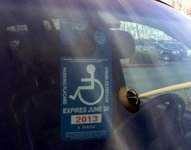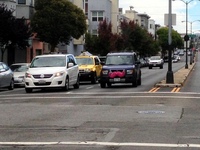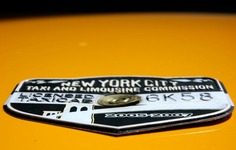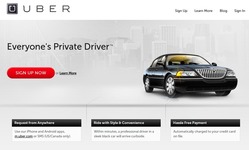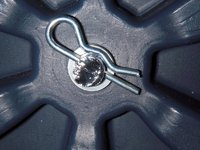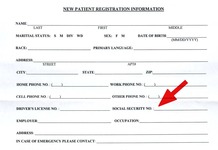 |
| Angelika/Mike Schilli |
Angelika After the school shooting in December last year at the "Sandy Hook" elementary school in Connecticut, with a death toll of 27, the press, including German newspapers, have been reporting about a steep increase in U.S. gun sales. Everyone suspects that Obama will now finally push for stricter gun laws. There's been less coverage, especially internationally, of so-called gun buyback programs, occasionally run by cities like San Francisco or Oakland, and reinstated last December because of the particular incident in Newtown, Connecticut.
The idea behind it is rather simple. It's an incentive for citizens to get rid of their guns and hence reduce the total number of weapons in circulation. In San Francisco, the police paid up to $200 per gun, that's easily earned money. Per person, they accepted a maximum of three guns, but only for assault weapons, which are illegal in California anyway, they paid $200, and $100 for legal semi-automatic handguns and rifles. This way, Oakland and San Francisco combined collected a total of 600 guns.
It's a fairly unbureaucratic process. No questions are asked about how, when, and under what circumstances the guns were obtained, or even why someone is in illegal posession of an automatic weapon in California. The only requirement is that the gun is functional, since it wouldn't make much sense to take it out of circulation if it can't be used anymore. These events are organized by local police, usually working with neigborhood organisations. This time, they required the gun owners to show a valid driver's license or utility bill to make sure they were indeed residents turning in grandma's old shotgun and exclude gun dealers from nearby counties, trying to get rid of stale inventory.
In the end, local police ran out of money and had to issue vouchers. For the particular event in December, a private citizen donated money to cover some expenses, because he wanted to contribute to reducing the number of guns in the Bay Area. In Oakland, the church of St. Benedict offered their premises for the event. The collected firearms are then destroyed in a spectacular fashion for the TV programs by cutting them with spark-spewing circular saws. Experts are divided if these programs actually reduce gun violence, or if it's rather just a symbolic act.
Angelika Like many urban areas, San Francisco suffers from notorious parking problems. We've reported several times already how many intricate rules drivers must pay attention to: Street cleaning, residential parking, red, green, blue, and white curb markers, and so on. Parking at a meter is usually rather expensive. On average, the meters demand $2 per hour, but in downtown San Francisco, it's a whopping $3.50, and in the touristy area around Fisherman's Wharf, it's $3.00. The new meters are quite advanced and will accept not only coins for payment. Drivers can pay by credit card, or a parking card, which can be obtained in $20 or $50 denominations and then used at the meter, which then deducts the selected amount from the card. Before 2013, there was no need to feed the meters on Sunday. But starting January 2013, that's a thing of the past, between noon and 6pm on Sundays, meters now need to be fed just like during the week, when payments are required between 9am and 6pm. Since drivers can't leave their cars in the same spot between Saturday evening through Monday morning anymore, as it was common practice in our neighborhood Noe Valley, more temporary parking will be available during that time. But of course the city coffers will also benefit from the additional influx of money.
In general, San Francisco has been sporting innovative parking and fee collection ideas lately. A pilot project named "SFPark" changes the current parking fee dynamically, depending on the number of available parking spots. If there is high demand, the price at the meter rises, nudging drivers towards parking for shorter durations and then vacating these spots, or park in less expensive areas in the first place, because they are willing to walk a greater distance to save money. The fee displayed at the meters increases in steps of 25 cents every month (to a maximum of $6 per hour), until on average there's at least one free spot per city block. In areas with plenty of available street parking, the fee at the meter decreases accordingly. Using a smartphone app, drivers can then inquire about the current parking situation and what fees are being charged. To make this project a reality, the city would need new parking meters equipped with the technology to receive and analyze the data, though. In general, this is not a bad idea, it might lead to a better utilization of available parking space by distributing parked cars around the city more evenly. Maybe some drivers will even opt for public transportation instead of parking at a meter if the former is more economical? On the other hand, the new system won't help residents of the affected neighborhoods at all, because they need parking spots that allow parking for more than two hours.
Angelika If you have ever crossed Golden Gate Bridge by car, you know that the bridge maintainers won't collect any fees if you are leaving the city, but that the toll is a whopping $6 per car when you enter. Until recently, drivers could pay the bridge toll in cash at one of the toll booths at the end of every lane, by stopping, handing the money through the car window to a friendly collector and then drive off. I fondly remember the times when we were traveling to San Francisco as tourists and stuck out like a sore thumb because we asked the bridge toll collectors for a receipt, which we planned to add to our photo album. At the end of March, the days of the bridge toll collectors are counted. Going forward, you'll only be able to pay electronically and that doesn't require any humans manning the toll booths anymore.
Golden Gate Bridge has been supporting the so-called Fastrak system since 2000. Michael has explained it in a previous edition already (Rundbrief 04/2006). It works with a small transponder box in your car that communicates with the toll plaza while you're driving and deducts the bridge toll from a credit card funded account. On Golden Gate Bridge, the Fastrak toll is only $5. The transponder works on all bridges in the Bay Area (including the Bay Bridge) and even beyond, all over California. It is most useful for residents, who often cross the local bridges. For example, I'm driving from San Francisco to Oakland and back many times per week, and crossing Bay Bridge without Fastrak would be a real nightmare. When taking one of the designated Fastrak lanes, there's usually not much delay or slow driving, while others are waiting for their turn at the toll booth.
But what about visitors or people who oppose the Fastrak payment system? When cash payments will be no longer accepted at the end of March, there'll be a way to open an online "license plate account". Car owners register their license plates online, add a credit card, and every time when the vehicle crosses the toll plaza on the bridge, the card gets charged with the correct amount for the bridge toll. No transponder needs to be carried along in the car for this, since the collection system takes a snapshot of the car's license plate while it is driving by. Also, one-time payments will be accepted, either 30 days before or 48 hours after crossing the Golden Gate Bridge, with an online payment system or by phone and credit card.
For visitors, this is very annoying, of course. One more thing to think about! If you don't have a credit card, there's a way to pay in cash at one of many kiosk stations, allegedly soon to be located in super markets and gas stations close to the bridge. They look a bit like a subway ticket vending machine (Cash-Toll-Machine). If drivers ignore the new rules, they'll get ticketed by mail, because every car driving by the toll booth gets photographed and the system sends an invoice to the registered owner. This process is just a last resort, it isn't really recommended by the bridge operators, but won't cost the car owner more than paying the toll correctly in the first place. Until recently, the Golden Gate Bridge operators have been charging additional penalties for non-paying drivers, and that's still the case on all other bridges.
Tourists from out of state, who usually drive over Golden Gate Bridge in a rental car, should inquire at the car rental agency counter if the rental company offers a bridge toll program. Usually, rental cars have Fastrak devices built in and the customer decides whether they want to use it or not. If they decline, they'll have to deal with paying the bridge tolls on their own. If they just cross the bridge without paying, the car rental company will receive an invoice issued by the bridge operators soon after, which rental companies not only promptly forward to the renter, but also add a hefty fee on top of.
Michael Over the last couple of years, San Francisco has heavily increased the fines imposed for illegal parking. As you can see in figure 8, back in 2002, I received a parking ticket for $25 when parking our car PERLMAN for an hour on the sidewalk in front of the house, because there were no parking spots available at the time. According to the new parking fee table from 2013, for the same infraction the city now assesses a fine of $110!
Other traffic violations carry more severe fines as well: Parking in a street cleaning zone while the street sweeper is coming through now costs $62. Parking at an expired meter? $72! And it gets really expensive at bus stops, where the city's traffic squad charges $267. It's commonly believed that it's okay to quickly halt at a bus stop and let a passenger out, but if a police officer takes notice and isn't busy chasing gansters, he will relentlessly issue a ticket to fill the city coffers.
And the jackpot is no doubt parking in a parking spot reserved for the disabled. That's almost a thousand dollars: $966. The same fine amount applies to people caught in those reserved parking spots with fake or "borrowed" placards. Ironically, placard abuse is rampant in the United States. Pay attention to what kind of people are occupying the reserved spots, and you'll find that they're often astonishingly quick on their feet. A while ago, I pondered the idea of building a website to expose these douchebags via their license plates. If I only had more time!
Some time ago, at the beach of Pacifica, we saw a dad with two kids park a car with a disabled placard in a handicap spot. Minutes later, he hauled a surfboard 600 feet to the beach, without any visible physical impairment. I wonder what he was suffering from?
Michael If you've ever tried to get a taxi cab in San Francisco after a heavy rain storm, you'd agree with me that there are deficiencies here in this town, just as if we were worshipping some destructive form of socialism. It's hard to believe, but in major American cities like New York City, San Francisco, Boston or Chicago, there's no free market for taxi drivers. Instead, these cities impose restrictions on the number of cabs in operation and hence create artificial bottlenecks on days with high demand.
What's happening is that these cities issue a limited number of so-called "Medallions" that no cab can be operated without. Like in a Mafia-controlled operation, wealthy middlemen are trading these licenses for millions of dollars and rent them out to taxi drivers on a daily basis. On top of paying the daily renting fee for a vehicle, taxi drivers therefore have the additional financial burden of having to compensate the medallion owner, before they even see a single cent of their income during a shift. In New York city, for example, a driver taking in $300 during a 12 hour shift pays about $150 to the taxi cab mogule who rents out the yellow cab with the embedded medallion.
Naturally, the swanky medallion owners defend this midevil bureaucracy tooth and nail against all efforts to align it with modern consumer requirements. Sure, who in their right mind would let go of a licence to print money? What's worse, the cab drivers aren't eager to introduce a free market either. More cabs lead to more competition and hence lower hourly wages. However, it's the customers who get the short end of the stick in this game, because they can forget about getting from point A to B on days with increased demand. Those of you who have ever tried to get a cab on New Year's Eve, grudgingly have given up at some point, only to finally take hopelessly crowded street cars across town, would most likely agree with me.
For this reason, a while ago, a startup company named "Uber" set out to offer black limousine rides for customers who were willing to pay roughly twice the regular cab fare. Their cars are often Lincoln Towncars, driven by chauffeurs in uniforms. You can't hail them like regular cabs, but need to page them via SMS message or a smart phone app within minutes. On a map, customers can watch the limo approaching. When arriving at the destination, customers make a digital payment via the smart phone, and the tip is included. Customers can then rate the driver and get an invoice via email. Since no cash is changes hands, Uber drivers feel safe to even to enter the shadier neigborhoods of San Francisco, where regular cab drivers usually start shaking and stay out!
Predictably, in almost every city Uber enters, the established taxi cab overlords raise a legal storm. In May 2012, they shut Uber down in Boston temporarily. Uber obviously walks a fine legal line and argues that they're not bound by the taxi restrictions because they're not operating taxi cabs, but offer a completely different transportation experience.
Uber's headquarters are located in San Francisco, where the new service has been received with great success, but recently a new contender has emerged: Private cars with a grotesquely large pink mustache on the front grill, called "car stache" in short. Behind this new service hides a startup company named "Lyft". Customers request their rides by smart phone app and pay the driver at the end of the ride via the app with a stored credit card. The money exchange isn't called "cab fare" for legal reasons, but a "donation" that the driver "suggests" and is about 20% less than the fare for a comparable cab ride.
After drop-off, both driver and customer rate the experience separately via the app. That way, the customer can reward the driver for driving courteously, and conversely the driver acknowledges that the customer's "voluntary" payment was considered adequate. Lyft pays new drivers an hourly wage of $18 during the first couple of weeks. As soon as drivers have established a customer base, their income is determined entirely by what they receive from customers, of which they may keep 80%. It seems that Lyft's workforce solely consists of young people who want to make a few bucks on the side. Drivers greet their customers with a so-called "fist-bump", a modern urban gesture, where two people make a fist with their right hand and slowly move them together until they gently touch at the knuckles.
Michael Germans tend to think "how well off we are with our great number of holidays, the whole world looks upon us with envy!" but that's a common misconception. While Americans can take far fewer vacation days than Germans, the number of national holidays is pretty much the same in both countries.
Before I get into more detail, I need to clarify that there are Federal Holidays in the U.S., enacted by the United States Congress, but they're not binding for businesses in the private sector. They're also called "Banking Holidays", describing holidays only obeyed by banks and other slacker shops like public schools and the post office. In the private sector, businesses pick the most important federal holidays for their employees, which typically results in two or three fewer days off. In addition, and in contrast to most parts of Europe, stores often open for extended hours on major holidays. When would the busily working population be able to shop otherwise?
Here are all American holidays in detail: New Year's Day obviously falls on January 1st and is always a welcome day off work. While parts of Germany celebrate the religious holiday of Epiphany on January 6th, there's no such thing in the U.S.. On the third Monday in January, Americans celebrate the birthday of African-American civil rights leader Martin Luther King Jr., who was assassinated in 1968. Celebrating this holiday on a Monday every day is quite an interesting choice, since the MLK's birthday is on January 15th, which falls on a differnt day of the week every year. However, in their astonishing pragmatism, Americans celebrate the holiday on a Monday each year, to make sure that they get a long weekend out of it!
President's day on the 2nd Monday in February, also known as "Washington's Birthday", is celebrated in honor of the first of a long line of American Presidents. The actual birthday of the man on the backside of the One Dollar Bill was on February 22nd. Then comes a long stretch without federal holidays for the working population until way into May, because Easter and Pentecost, which are big religious holidays in Germany aren't celebrated here as much and hence the following Mondays are regular working days. An exception is Good Friday before Easter, when the New York Stock Exchange is closed, but that's a private enterprise and not a government-run institution.
"Memorial Day" on the last Monday in May is to honor fallen American soldiers of various wars. People with fallen soldiers in the family might pay them a visit at the local cemetary. July 4th marks Independence Day, when people ignite child-safe table fireworks while eating Hot Dogs to commemorate the date when the United States cut themselves loose from British rule. The U.S. used to be a British colony whey back when, but when Britain asked for taxation without representing Americans in British government, this got old pretty quickly. The 4th of July holiday is a major deal, and if it falls on a Thursday in a given year, companies often give Friday off as well for an extra long weekend. If it's on a Sunday, the Monday after is off as well. If it's on a Saturday, the Friday leading up to it is a holiday as well.
"Labor Day" on the first Monday in September is conceptually similar to the 1st of May in Germany, except that it's not unions parading the streets with red flags asking for lofty wage increases. Instead, in the U.S., you'll see families driving to a public park in their neighborhood, throwing hamburger patties on the grill and an egg-shaped leather ball through the air.
How "Columbus Day" on the second Monday in October is celebrated depends on where you live. It is virtually unknown in states like South Dakota or Alaska, and in states who do recognize it, only schools, banks and the post office are closed. It commemorates October 12th, 1492, when Columbus anchored his ship and stepped on American soil for the first time. November 11th 1918, on the other hand, marks the end of the First World War, and Americans celebrate "Veteran's Day" on this date. That's another one of these holidays that hardly any company recognizes, except maybe military-friendly defense contractors.
Then, in November, there's the most important holiday of all: Thanksgiving, originally some kind of harvest celebration, but nowadays a family holiday where everyone and their dog is travelling home to their family and all major airports turn into disaster areas. Several generations of an extended family then sit together at home, take a minute to reflect on life, and family members take turns in proclaiming what they're thankful for. While this is happening, people consume abnormous amounts of braised turkey with a lumpy sauce called gravy, drink cheap red wine, and makes resolutions on the next day, like going on a diet or get a membership at the local fitness club. During the following weeks, there's always reheated turkey leftovers for dinner, until finally they can't take it anymore.
And then Christmas. American children are disadvantaged compared to their German friends because they need to wait until the morning hours of December 25th. Also, they believe that "Santa Claus" brings the presents on a sled hauled by reindeers, and he's entering people's houses through the chimney. There's no "Christ Child" at work here, as German children believe the little baby somehow teleports the presents under their Christmas trees. German kids can already play with their presents on Christmas eve (12/24), which is uneventful in the United States. Usually, it's not even a day off work, but the day after, Christmas day, certainly is, and often the day after that as well. Christmas day is one of the few holidays when many stores are actually closed. I've learned this the hard way by pulling up to a Safeway grocery store parking lot and rubbing my eyes in disbelief. In the U.S., unbelievable! On these days, people need to resort to small mom and pop shops to get their groceries, they're always open and especially on these days.
New Year's Eve is, as in Germany, not an official holiday in the U.S. All in all, the working population in the United States is enjoying about 12 or more holidays a year. And they're never lost because most of them always are on a business day. In comparison, German holidays differ by state, sometimes vanish because they fall on a weekend. To give you an example, the state of Bavaria celebrates about 15 holidays per year that could potentially fall on a business day. Americans fare quite well in comparison. Sure, when it comes to vacation time, they're far behind, of course. New employees usually start with two weeks per year, which is laughable compared to the six weeks that are standard in Germany. But since I've been at Yahoo for eight years already, I've been enjoying a solid five weeks of vacation per year lately, believe it or not!
Michael I'm sure I've mentioned this before: when German children learn to speak English in school, their newly aquired skills are of little practical value when they go abroad and try to use them. They're taught how to get the grammar right, including present perfect and past tense, but when they try to communicate with regular people in the U.S., they need to start relearn everything all over again. A large part of the vocabulary in everyday use is never taught in German schools. Take home improvement, for example. I'm pretty sure that someone with a German high school degree could not even come up with the words for half the items sold at Home Depot.
They've never heard the words "pliers", "drill", "door handle", "door hinge", "sand paper", or "Phillips screw driver". The word for the adjustable wrench in figure 19 is also widely unknown. There are tools available in Germany that are similar to what's called a "monkey wrench" in the U.S., their literal translation is "Englishman" (wrench open on one side) and "Frenchman" (open on both sides).
This reminds me that a TSA employee at the X-Ray machine at the airport once asked me if I had a ranch. I didn't quite get the connection between my backpack and raising cattle, and looked at him quite puzzled. It turned out that I had left an adjustable wrench for bicycle repairs in one of my backpack's many pockets, and bringing mechanical tools apparently wasn't permitted this week. The employee had spoken with a South American accent and meant to say "wrench", not "ranch", how funny!
And there's mechanical parts with names that I honestly have never heard in all of the sixteen years I've been living in the U.S.. Recently, I asked a colleague at work if it was okay that the wheels of my beach mobile Rundbrief 08/2012 were mounted onto the axle and held in place only by thin pins (Figure 20), if that wasn't shoddy craftsmanship, or "Pfusch" in German?
It turned out that if something doesn't fall apart right away in the U.S., it's "good enough" and noone spends another thought on it. But, so I went on, wouldn't it be better to use some kind of quick release instead of the flimsy pins? Sure, it would be more expensive, but so much sturdier, and also much easier to take apart and put back together! He admitted that there's no equally catchy word for "Pfusch" in English. But he said that there's a word for design that's more complicated than needed, and that's "dumb". Apparently, my colleage is a comedian!
And then I needed to know the name of this curly wire: It's called a "cotter pin". Apparently, a cotter is not only someone living on someone's premises in exchange for garden and houshold work, but also denotes a metal wedge or pin. I had never even once heard of that word before!
Back to the list of the handyman tools mentioned at the beginning of this topic: "Phillips head" is American for a cross-type slotted screw driver. It's named after its inventor, businessman Henry F. Phillips, which spells with two Ls, as opposed to "Philips", which is a Dutch electronics company. I bet you did not know that!
Michael In the United States, U.S. citizens and legal immigrants alike identify themselves by a nine-digit number that looks like XXX-XX-XXXX. Germany has similar sounding numbers called "Sozialversicherungsnummern", which translate roughly to "Social Security Number", but they're different in that they only identify employed individuals and allow officials to track people's eligibilty for payments from the German retirement system. In the U.S., on the other hand, the SSN is used for general identification of individuals. Illegal immigrants don't have valid SSNs, but they often buy stolen numbers or recycle numbers of deceased citizens, because without an SSN, it's impossible to open a bank account or get a driver's license for the state the individual currently is residing in. Even doctor's offices hand out forms that ask for the SSN to link the patient to their health insurance if they have any. If you call your bank's phone operators, they identify the caller by the last four digits of their SSN, which the bank has on file. When I came to the U.S. in 1996, I remember that even the supermarket chain Costco wanted my SSN on their membership form, and I gave it to them, because I was an idiot who didn't know any better back then.
American citizens get their SSN at birth from the government. For legal immigrants, getting their SSN is the first step to gain ground in their new environment (Rundbrief 01/1997). But it's important to know that there's a lot of fraud happening with SSNs as well. It's very common that they get stolen, for example. If you carry your SSN in your wallet and a pickpocket snatches it, the culprit often sells off the SSN to dubious individuals who then soon after take on the identity of the victim ("identity theft"). They apply for loans which they never intend to pay back, or perform all kinds of malicious mischief which often takes the victim years to repair afterwards, because their reputation is ruined and their credit report Rundbrief 05/2004) received a severe dent.
If you're at a hospital or at a lab and someone is taking a blood sample, the employees no longer use the SSN, but identify the patients by their date of birth. The nurse asks "what's your date of birth?" and then compares your answer with what's on the form that describes your case and identity. That way, it's rather unlikely that Mrs Smith is going to get Mr Jones' medicine injected. If you call your credit card company and want to know your balance, the automated system often wants to know your mother's maiden name, because that's usually also a field the form asks for when you apply for a new account.
In critical situations, like when you report your credit card stolen, the credit card companies often identify customers by their credit history. They'll ask questions like: Who was your employer when you applied for your first credit card? If you've switched jobs many times over the course of several years, you often need to think hard to come up with the correct answer.
For security reasons, more and more people have become very careful about handing out their SSN to the plethora of services that are asking for it. Does the supermarket need it? Of course not. And when I'm at a doctor's office nowadays and the new patient form asks for my SSN, I'll leave it blank (Figure 22) and wait what the receptionist is going to say. Why on earth would any sensible person leave their SSN with a receptionist who could easily sell the number online and make my life a living hell? Most doctor's offices will be okay with that and won't even ask for your SSN anymore if you hand them your insurance card. Instead of the SSN, they use the number printed on the insurance card, which uniquely identifies the insured patient, which is what they need. They have no business identifying a U.S. resident with their credit history. That's good progress.
If you sign up for an online service like Yahoo or Facebook, in the U.S., the account is typically secured by a password. In case the customer forgets the password, there's so-called "security questions" that the customer answered at sign-up, questions that only a particular customer is supposed to know the answer to. Typical questions are "What was the name of your first pet?" or "What street did you live on when growing up?", but since online predators can find out the answers to these questions often by simply scouring people's Facebook profiles, I think this approach amounts to nothing but dangerous security theater.
In figure 21, you can see a credit card application form, which not only asks for the applicant's annual salary, but also for the SSN. Can you imagine that the department store chain Macy's grants new customers a 15% discount on their purchase if they fill out this form? The people behind the register ask me every time I purchase something at Macy's if I would like to fill out the form, but I'm thinking every time: How stupid would I have to be to put my SSN on a piece of paper that is lying around for several hours at a register, with dozens of people glancing at it, containing a number that makes it very easy for thieves to steal my identity? I recommend: If in doubt, be stingy.
Greetings from our information hungry country:
Angelika & Michael










